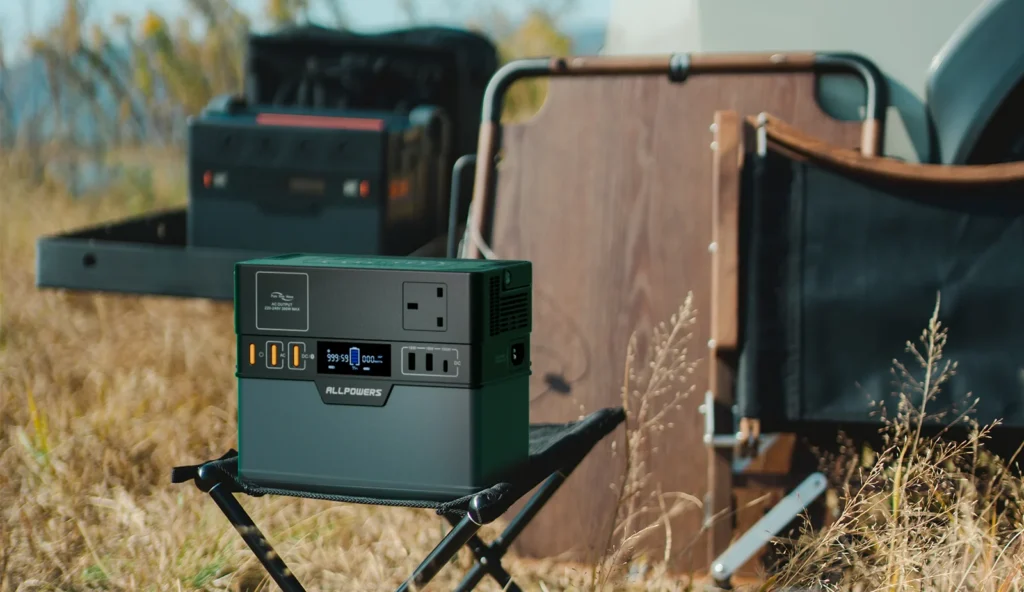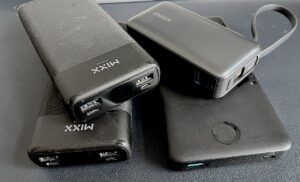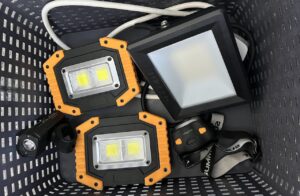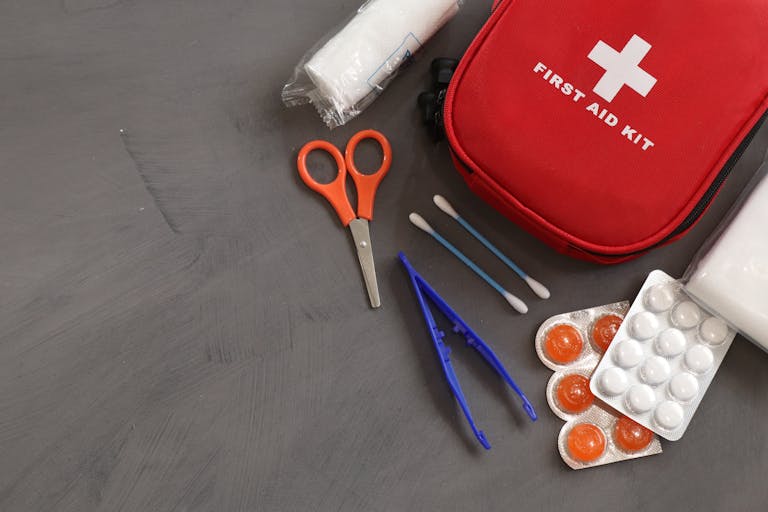How I Prep: Power Cut Preparedness in 2025

Power Cut Preparedness
My plan for power cut preparedness isn’t anything flashy, and there’s definitely room to improve. I’ve spent under £500 in total, and most of what I’ve bought is useful beyond just emergencies. In fact, with the exception of the folding solar panel, I use pretty much everything regularly. Prepping for a grid down event doesn’t need to cost the earth.
I’ve talked specifically about what I use as an individual and not anyone else in our household. Most things won’t change much depending on the size of your house anyway and other people in your household might have their own preferences when it comes to portable power banks and lighting in their own rooms. The most important thing is to just make sure they’re always charged.
Power Banks & Battery Packs
I’ve built up a small collection of USB power banks over the years:
- 2x Asda own-brand (20,000mAh)
- 1x Anker PowerCore 10k (10,000mAh)
- 1x Anker Nano (10,000mAh)
They get used daily to keep my phone and iPad charged, and during an outage they’ll also power torches, lanterns, and other smaller gear.

Portable Power Stations
I’ve got two:
- EcoFlow River Mini (210Wh)
- AllPowers S300 (288Wh)
Both are always plugged in when they’re not being used so they stay at 100%. I keep them on smart plugs, which I set to charge for an hour or so during the day when I’m usually home. It gives me a bit more peace of mind on the fire safety front.

Lighting Setup
Lighting is the first thing I try to sort if the power goes out. Each bedroom has a lamp, there are two in the living room, one in the kitchen, and I keep a spare in the cupboard under the stairs for the bathroom.
All the lamps have modern LED bulbs, and none of them draw more than 7W. I use my portable power stations to run them: the EcoFlow stays downstairs and powers the lights down there, and the AllPowers runs the lighting upstairs. Extension leads help me place them centrally to get good coverage through the house.
To get everything set up, I’d start by using the torch on my phone, along with a mix of cheap torches, headlamps, and bike lights I’ve picked up from supermarkets and online over the years. Some are rechargeable, others take AA or AAA batteries.

Keeping the Fridge Running
If it looks like the power might be out for a while, my first priority (after lights) is usually the fridge freezer. I’d plug that into the EcoFlow and use the Renogy 100W folding solar panel to top it up. I’ve got a long MC4 extension cable that lets the panel stay outside while the EcoFlow sits indoors next to the fridge.
The fridge pulls about 300Wh per day. With a bit of sun — around 3 good hours — the panel can fully cover that. The EcoFlow’s battery is only 210Wh, so it’ll probably run out overnight, but during the day I’ll try to charge the fridge and all my USB battery packs at the same time, to get the most out of the sun.
Internet & Info
My phone is my main source of news and updates. I also use my laptop, which only pulls about 20W when in use. My broadband router uses about 25W, so I’d keep it plugged into one of the power stations if there’s enough battery to spare. If things are running low, I’d turn off the router and hotspot off my phone instead.
The living room TV is 55” and pulls 100W, so I probably wouldn’t bother with that — it’s a bit of a power hog compared to the alternatives. A smaller TV might be more viable but I don’t really have anything smaller.
Backups
I’ve also got a BESTEK 200W car power inverter that plugs into a 12V socket. It works with both cars at home — one petrol and one electric. It’s not my first choice, but if the power stations are getting low, charging from either of the cars is a decent fallback.
Our electric car has a 50kWh battery — that’s a huge amount of stored energy, even if I can only access a small portion of it through the 12V cigarette lighter socket, which is limited to about 180W. That’s still enough to charge phones, tablets, laptops and even the power stations if I really needed to.
Some electric cars come with the ability to plug in much larger inverters or even have built-in vehicle-to-load (V2L) features. Mine doesn’t, but if it did, it would open up a lot more options — like running a fridge or boiling a kettle directly from the car. It’s something worth checking if you’re thinking about switching to an EV.
As for the petrol car, there’s also the option of connecting a larger inverter directly to the car battery rather than using the 12V socket. When the engine’s running, the alternator keeps the battery charged, and you can potentially draw over 1000W this way. That’s enough to charge all my power stations and USB battery packs at once. These are relatively cheap on Amazon, so it’s something I’ll likely pick up as a future upgrade.
If fuel is still available, I’d make a point of topping up the tank and a jerry can early on. A petrol car can charge things while i’m driving or just idling at home on the driveway. It’s not especially efficient — a rough estimate from the Quebec government suggests a 2L car uses about 1.2L of petrol per hour while idling — but it can do the job if I really need it to.
How I Will Improve
There are a few things I still need to sort. I don’t yet have any rechargeable AA or AAA batteries or a charger — something I’m going to fix soon. They’re cheap and easy to get hold of and would make all my smaller lights much more reliable long term.
The biggest upgrade on my list is a larger power station, somewhere around 1000Wh+. That would give me a lot more breathing room, especially for running the fridge or powering multiple things overnight. A bigger unit would also make it easier to connect up higher-capacity solar panels. With a larger power station, I could also run things like a small air fryer — if it’s the middle of summer and there’s plenty of sun, I’d probably opt for that over using a portable gas stove.
Speaking of solar, I’m looking at picking up a lighter folding 100W panel from Amazon — something more compact and portable than the rigid glass Renogy panel I use now. It would be handy for the AllPowers S300 and a better fit for camping or taking away on weekend trips etc.
I’m also most likely going to spend the money on the power inverter I mentioned earlier to connect directly up to the car battery of my petrol car. It’s far cheaper than having a generator sat in the garage doing nothing most of the time.
Have your own Thoughts? Leave a comment Below 🙂
A little disclosure: there are affiliate links on this website! That just means if you click on a link, find something you like and buy it, this site might receive financial benefit. Don’t worry, you won’t pay any extra – sometimes you might even get a discount. These links help to pay for the upkeep of the site.
Disclaimer: The content of this website is opinion and should never be considered as professional advice. Always consult a professional in the relevant areas.





